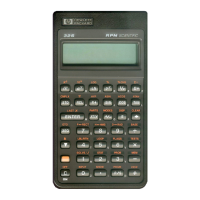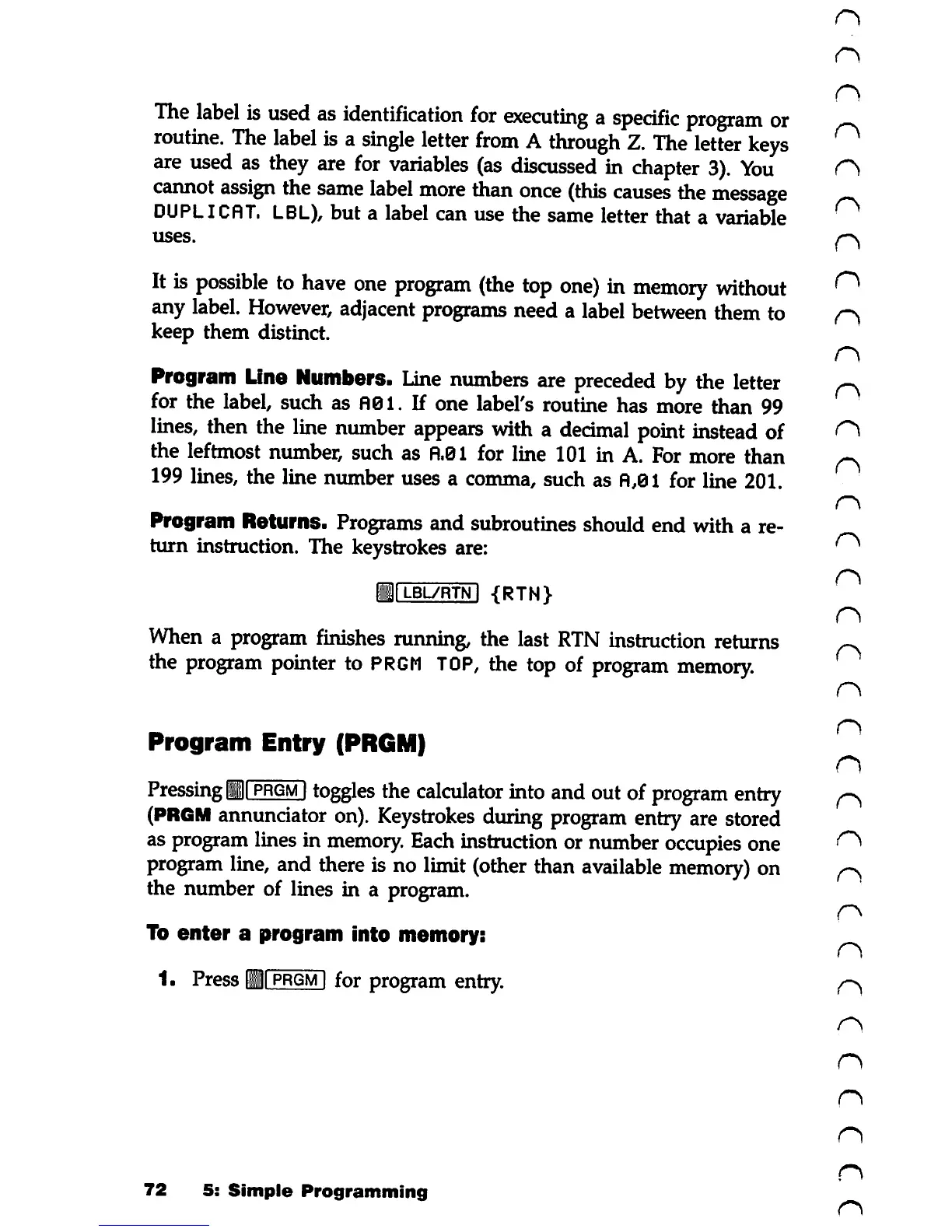The
label
is
used
as
identification
for
executing
a
specific
program
or
routine.
The
label
is
a
single
letter
from
A
through
Z.
The
letter
keys
are
used
as
they
are
for
variables
(as
discussed
in
chapter
3).
You
cannot
assign
the
same
label
more
than
once
(this
causes
the
message
DUPLICRT. LBL),
but
a label can use the same letter that a variable
uses.
It
is
possible
to
have
one
program
(the
top
one)
in
memory
without
any
label.
However,
adjacent
programs
need a label
between
them to
keep them distinct.
Program
Line
Numbers.
Line
numbers
are
preceded
by
the
letter
for the label, such as fl01. If one label's routine has more than 99
lines,
then
the
line
number
appears
with
a
decimal
point
instead
of
the leftmost number, such as
fl.01
for line 101 in A. For more than
199 lines, the line number uses a comma, such as fl,01 for line 201.
Program Returns. Programs and subroutines should end with a re
turn instruction. The keystrokes are:
Hi
LBL/RTN
| {RTN}
When
a
program
finishes
running,
the last
RTN
instruction returns
the
program
pointer
to
PRGM
TOP,
the
top
of
program
memory.
Program
Entry
(PRGM)
Pressing
TprgmI
toggles
the
calculator
into
and
out
of
program
entry
(PRGM
annunciator
on).
Keystrokes
during
program
entry
are
stored
as
program
lines
in
memory.
Each
instruction
or
number
occupies
one
program
line,
and
there
is no
limit
(other
than
available
memory)
on
the number of lines in a program.
To
enter
a
program
into
memory:
1.
Press
Hi
prgm
Ifor
program
entry.
72
5:
Simple
Programming

